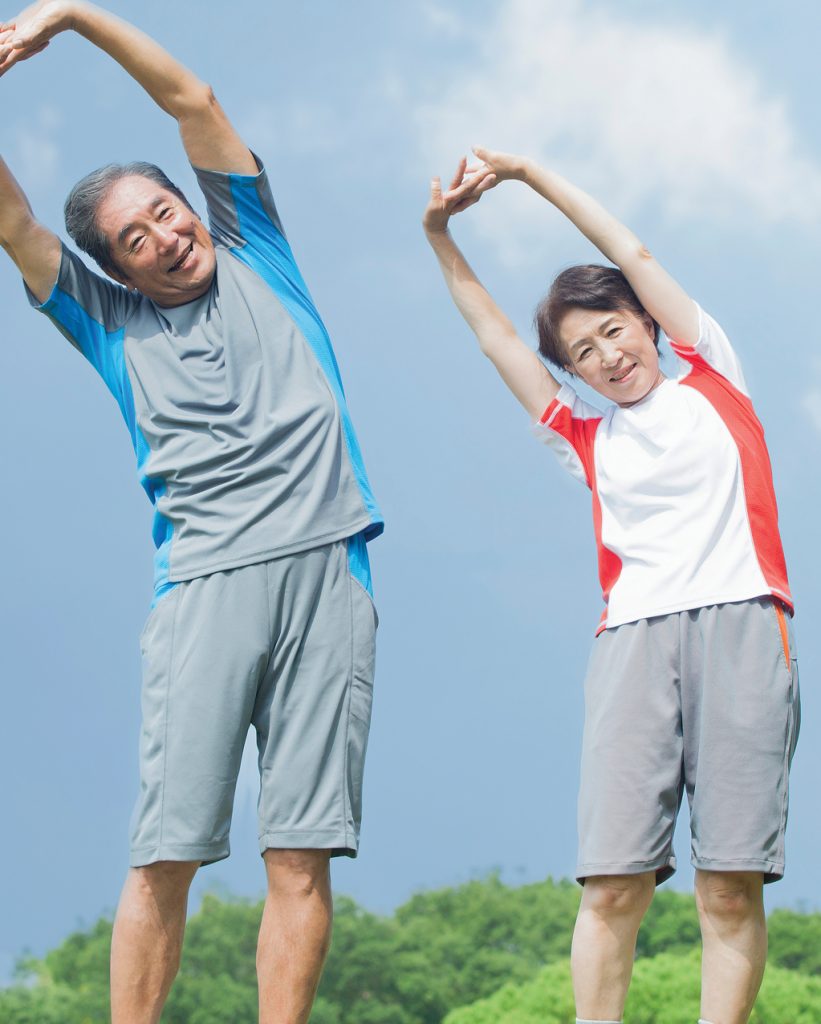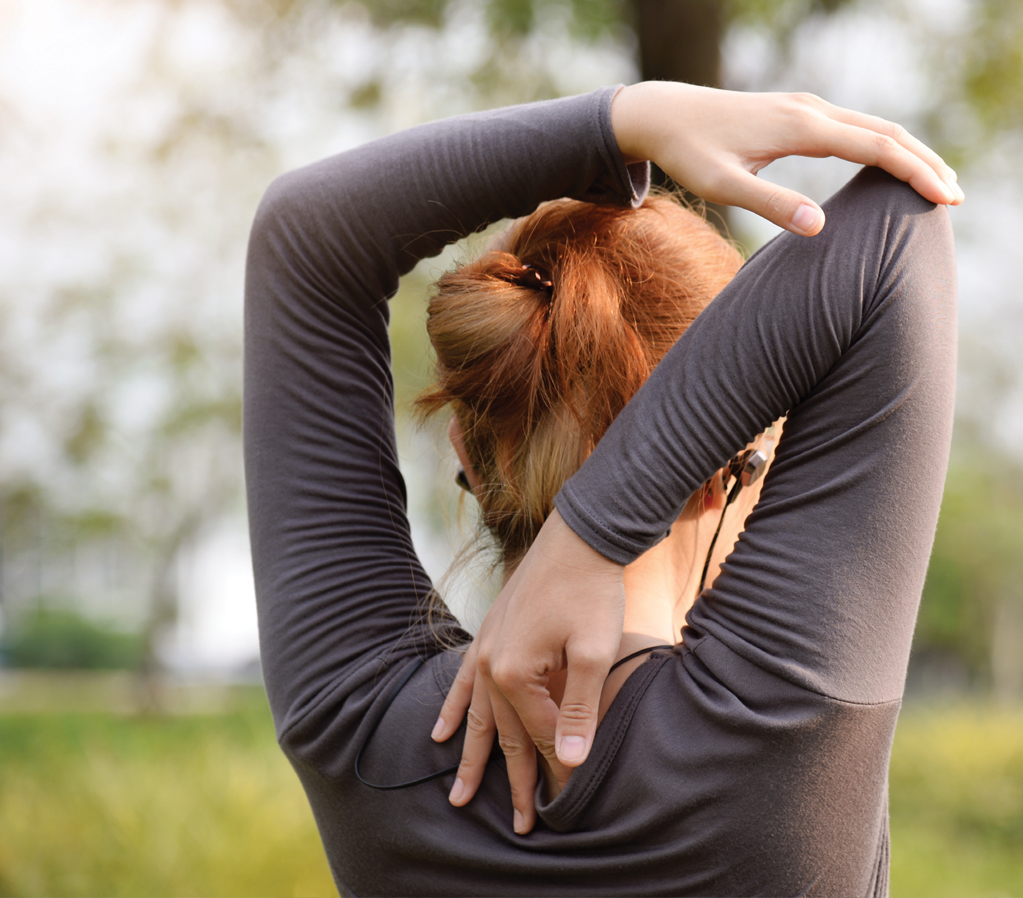STRETCHING YOUR BODY IS GOOD FOR YOUR HEALTH, WHATEVER YOUR AGE, BUT IT’S VITAL FOR SENIOR CITIZENS. HAVING A MINIMUM LEVEL OF ELASTICITY IN THE MUSCLES WILL MITIGATE RISK OF FALLS AND IMPROVE BALANCE, COORDINATION, STRENGTH AND STAMINA.

Elderly people have brittle bones, so when they fall, they break their bones more easily. Elderly people are also more susceptible to falls as they lose their balance from being inactive and inflexible.
“To stay healthy, improve health and prevent falls, older adults who are 65 years and above should work on improving flexibility. This will help to improve coordination, balance, strength and stamina. It is important to avoid prolonged periods of sitting or inactivity, as this alone is a risk factor for poor health,” says Sarah Hayward, a physiotherapist who has been practising for 16 years.
BENEFITS

Health and wellness website, Prevention (www.prevention.com) sums up the benefits of stretching:
- Stretching increases strength by improving circulation and blood flow to the muscles and brain, which helps with cognitive function, too.
- A good stretch wakes you up and invigorates you, helping you to start the day well.
- Stretching increases range of motion. Being less stiff means better pain management as well.
- Stretching improves flexibility, which in turn contributes to better body coordination and balance.
- Stretching helps to keep blood sugar levels down.
Hence, stretching is important for the elderly.
Stretching can be easily done at home so it will be less daunting for the elderly. They can do it by themselves, too. Besides stretching, the elderly should also include aerobic exercises and strength training to remain healthy.
A body in motion stays in motion. However, before starting on any type of exercise, including stretching, consult a doctor.
PARTS OF THE BODY TO STRETCH

So what are the simple stretching exercises that the elderly can do daily? Yuri Elkaim, bestselling author and health expert (www.yurielkaim.com), suggests the following:
1. Neck side stretch
This neck side stretch will loosen any tension in your neck and the top of your shoulder from sleeping in the wrong position for too long, or from not having enough cushioning.
- Start by sitting tall in a chair. Gently lean your head to one side, then the next, to warm up your neck.
- Now lift your right arm up and over your head, resting your palm gently on the left side.
- Pull your head to the right very gently — in fact, just placing your hand there may be enough to cause you to feel the stretch.
- Hold for 20–30 seconds, then repeat on the other side.
2. Shoulder and upper back stretch
Over time, it can become hard to stand up straight, since the muscles are so used to being in a hunched position. This shoulder stretch will help loosen these muscles and improve spinal flexibility, so you can stand straight again.
- Begin standing tall, arms by your sides. Now, reaching behind you with both hands, pull your shoulders back and clasp your fingers together.
- If you feel a stretch already, hold it here. If you can go further, push your clasped hands away from your lower back and gently arc backward.
- Return to standing tall, and repeat.
3. Triceps stretch
This can be done either standing or sitting, and is great for improving flexibility and mobility in the arms and upper back.
- Sit tall in a chair (or stand), lift your right arm up over head, bending at your elbow.
- Now, reach your opposite arm up to clasp your elbow, and pull gently in the opposite direction. You should feel a light stretch through the back of your arm.
- Hold for 20–30 seconds, then switch arms.
4. Back stretch
This is great for gaining greater mobility in your spine and can even help with rounded shoulders. It will also get your blood flowing.
- Start by standing tall, with hands on your hips.
- Gently stretch backward, looking up toward the ceiling. Hold for about three seconds, then return to standing position.
- Repeat 10 times.
5. Standing quadriceps stretch
This is excellent for lengthening the quadriceps muscle that sits at the front of your thigh. This area can often become shortened and tight from sitting or hunching forward, which can lead to pain and a worsening of bad posture.
- Begin standing tall, holding onto the back of a chair or countertop with your free hand for balance.
- Slowly bend your right knee and grasp your foot. At this point, you might already feel a stretch through the front of your thigh.
- Hold this stretch for 30 seconds, then repeat with the other leg.
6. Ankle circles
Stiff and/or weak ankles spell bad news when it comes to maintaining your balance. By gaining greater flexibility, you create a first line of defence against falls and stumbles.
- Get comfortable in a sturdy chair, sitting up tall.
- Extend your right leg out in front of you, keeping the other on the floor.
- Rotate your right ankle; 10 to 20 rotations clockwise and 10 to 20 counter-clockwise.
- Lower your leg and repeat with your opposite leg.
7. Seated hip stretch
Tight hips can often keep you from easily doing common activities, such as getting out of a car or bath tub. This will help increase flexibility in your hips, allowing you a greater range of motion.
- Begin sitting tall in a sturdy chair.
- Cross your right leg over your left, letting the right ankle sit atop your left knee.
- Relax your right hip, letting gravity pull it toward the floor.
8. Cat-cow pose
The cat-cow pose is a yoga stretch, and good for increasing mobility and flexibility in the spine.
- Begin on the floor on all fours. Make sure your hands are directly beneath your shoulders and your knees are directly beneath your hips. Use small pillows or towels for extra padding if your knees are sensitive.
- Inhale, arching your spine and lifting your head and chest toward the ceiling. Hold for a breath.
- Exhale while pulling in your stomach and dropping your head and neck.
- Repeat this movement as many times as desired but do a minimum of 10–15 repetitions.
9. Hamstring and lower back stretch
This gentle stretch targets the lower back and hamstrings, which can become tight or painful due to prolonged sitting and/or poor posture.
- Come into this stretch by lying face-up on your bed or floor. Bend your right leg and slowly move it toward your chest.
- Keep your shoulders flat on the floor as you reach your arms around your right knee and pull it toward you.
- You should feel a slight stretch through your low back, glutes and hamstring as you hold for 30 seconds.
- Repeat with your opposite leg.







